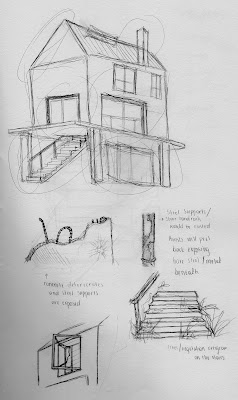Material Research:
Aluminium Alloys: Aluminium is a plentiful metallic element. When combined with oxygen and hydrogen it forms bauxite (the ore which is most commonly used to mine for aluminium). It is a strong metal, but also lightweight thus it is commonly used.
Aluminium is extracted in three stages - mining of the bauxite ore, refining the ore to recover alumina and smelting alumina to produce aluminium.
It is a good conductor of electricity and very resistant to atmospheric corrosion. It is commonly used in construction of domestic and industrial products such as cars, ships and aircrafts.
Flat Glass: This is glass produced in plane form to allow for easy use as windows, doors, transparent walls and car windshields.
The most common method for producing this glass is the float glass method. This method produces sheets with uniform thickness and almost no bends.
Glass is a rather fragile material that can easily be shattered by a strong impact. Being a transparent material, it allows light through into structures.
Concrete: Concrete consists primarily of aggregate, cement, and water (although this can vary depending on specifications). Concrete is used in many architectural structures, foundations, bridges/overpasses, roads and dams.
Despite its wide use, concrete does have a some structural disadvantages. It lacks tensile strength and usually requires steel reinforcement and it can also be damaged by many processes such as freezing and trapped water. It does however, have a high compressive strength. The process of producing concrete is a major source of greenhouse gas emissions, however it can be recycled and reused. Its high thermal mass and low permeability make it ideal for an energy efficient house.
Concrete will shrink with time and it will be subject to cracks and will also degrade when exposed to environmental effects.



















